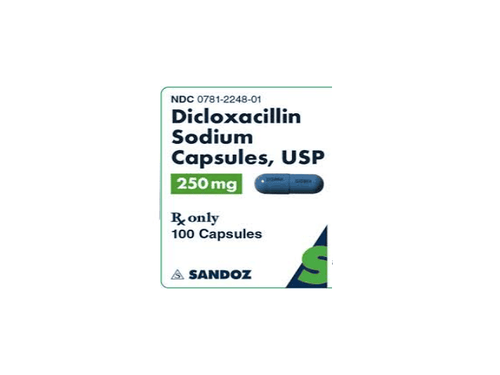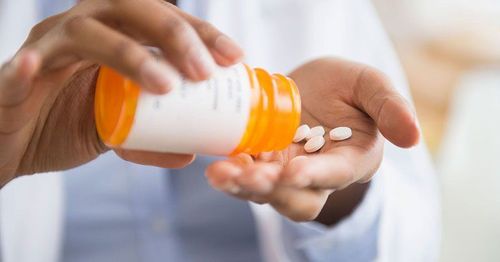This is an automatically translated article.
Ofxaquin contains Ofloxacin 200 mg, belongs to the group of drugs used to treat parasites, anti-infectives, antivirals and antifungals. The drug is in the form of film-coated tablets, packing is a box of 10 blisters x 10 tablets.1. What is Ofxaquine? How is the use?
Ofxaquin is a fluoroquinolone antibiotic. Ofloxacin has a broad spectrum of antibacterial activity including Pseudomonas aeruginosa, Enterobacteriaceae, Haemophilus influenzae, Staphylococcus, Neisseria spp., Streptococcus pneumoniae and a few other gram-positive bacteria. Currently, Ofxaquin drug is used in the treatment of infectious diseases, infections caused by viruses or fungi such as: Bacterial bronchitis, pneumonia, Chlamydia infection in the cervix, infectious colitis, etc. Skin and soft tissue infections...2. Indications and contraindications of Ofxaquin
2.1 Indications Ofxaquin is indicated for the treatment of:
People with severe bacterial bronchitis People with pneumonia. People with Chlamydia infection in the cervix or urethra with or without gonorrhea, prostatitis, uncomplicated gonorrhea, urinary tract infection. People with skin and soft tissue infections. People with inflammatory bowel disease caused by bacteria. 2.2 Contraindications of Ofxaquin Drugs Ofxaquin are contraindicated in the following cases:
Hypersensitivity to the drug's components. Children under 15 years old, pregnant and lactating people. 3. Dosage and how to use Ofxaquin How to use:
Ofxaquin drug used orally. The patient should swallow the tablet whole instead of crushing or chewing it. Dosage:
In case of pneumonia or bronchitis: 400mg every 12 hours x 10 days. In case of Chlamydia infection in the cervix and ureters: 300mg every 12 hours x 7 days. Prostatitis: 300mg every 12 hours x 6 weeks. In case of uncomplicated gonorrhea, gonorrhea: 400mg single dose. In case of cystitis caused by E.Coli or K. pneumoniae: 200mg dose every 12 hours x 3 days. In case of cystitis caused by other bacteria: 200mg dose every 12 hours x 7 days. Skin and soft tissue infections: 400mg every 12 hours x 10 days. Note: For children, people with impaired kidney function or cirrhosis, it is necessary to consult a doctor for the most appropriate dose.
Treatment of missed dose, overdose:
In case of overdose Ofxaquin, it is necessary to stop the drug immediately and go to the nearest medical facility for timely treatment. If you miss a dose of Ofxaquin, you should take it as soon as possible. However, if it is almost time for the next dose, skip the missed dose and take a new dose.
4. Ofxaquine side effects
When using Ofxaquin, patients may experience some unwanted effects such as:
Nausea, headache, insomnia, dizziness, vomiting, diarrhea, rash Vaginitis. Muscle or joint pain. Severe anaphylactoid reactions such as convulsions, pseudomembranous colitis, photosensitivity may lead to phototoxicity. Although Ofxaquin side effects are rare, if you do, you need to stop using the drug and go to the nearest medical facility for timely examination and treatment.
5. Ofxaquin drug interactions Care should be taken when combining Ofxaquin with:
Mineral salts, vitamins with iron or mineral salts. Antacids containing calcium, aluminum, magnesium, sucralfate... Cyclosporin, warfarin. Non-steroidal anti-inflammatory drugs. Above is all information about Ofxaquin drug, you need to carefully read the instructions for use, consult your doctor / pharmacist before use. Absolutely do not arbitrarily buy drugs to treat at home because there may be unwanted side effects.
Please dial HOTLINE for more information or register for an appointment HERE. Download MyVinmec app to make appointments faster and to manage your bookings easily.













